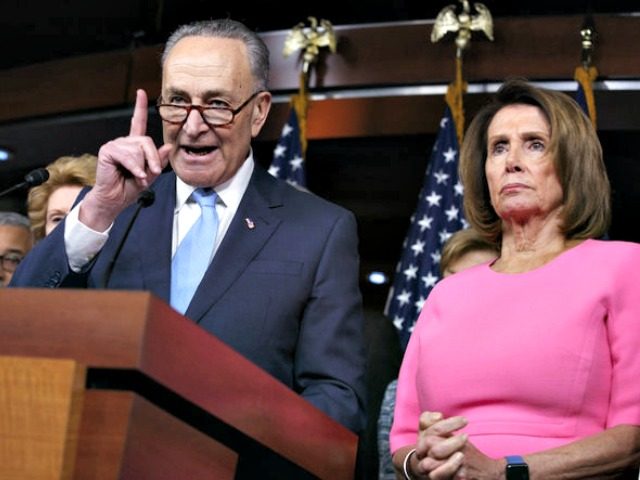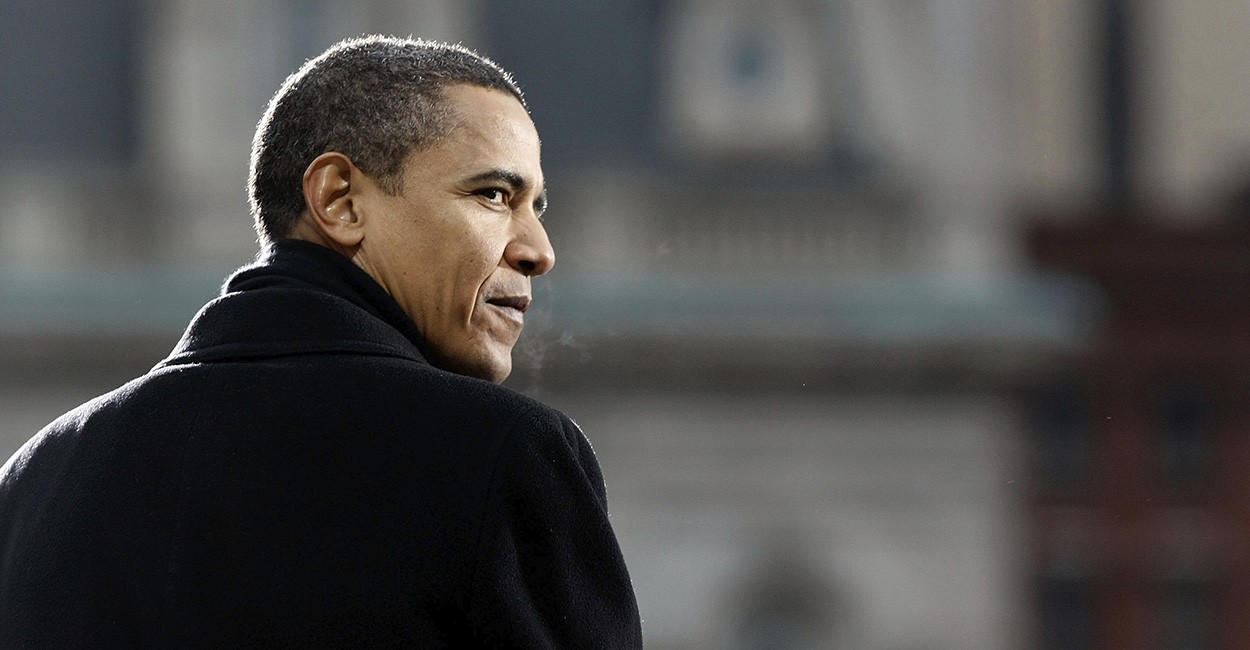By: Ronnie Kurtz
 Senate Majority Leader Harry Reid has kept himself busy during the summer doldrums by threatening to exercise the “nuclear option.” The phrase refers to a legislative maneuver that would allow Sen. Reid to end filibusters of executive branch nominees with a simple majority (51 of 100 senators), rather than the 60-vote threshold currently enforced. The explosive imagery the term conjures up is well deserved, as the threat has caused quite a backlash from Republican counterparts. In light of this impending showdown, it is pertinent to briefly examine the arguments for and against filibuster reform, as well as to examine how the filibuster has affected some recent legislation.
Senate Majority Leader Harry Reid has kept himself busy during the summer doldrums by threatening to exercise the “nuclear option.” The phrase refers to a legislative maneuver that would allow Sen. Reid to end filibusters of executive branch nominees with a simple majority (51 of 100 senators), rather than the 60-vote threshold currently enforced. The explosive imagery the term conjures up is well deserved, as the threat has caused quite a backlash from Republican counterparts. In light of this impending showdown, it is pertinent to briefly examine the arguments for and against filibuster reform, as well as to examine how the filibuster has affected some recent legislation.
The introduction of Rule XXII in 1917 codified the affirmation of two-thirds of Senators present and voting as the threshold to end debate on a measure. Several changes have been made to the cloture rule since, and today three-fifths of all Senators are required to vote in the affirmative to bring cloture.
Though each successful filibuster reform effort has changed the parameters, the arguments on each side of the debate have remained relatively constant over time. The case for not reforming the filibuster has always centered on the belief that “the minority needs rights for protection.” In other words, the U.S. Senate is the final bastion of free debate and discussion; substituting a 60-vote cloture threshold with a simple majority would deny minority lawmakers from fully covering a subject. Such an elevated threshold does not advantage the minority disproportionately, but rather “gives a minority the opportunity to negotiate what it believes is an intolerable proposal into one it can live with.”
Objectors argue that, while the filibuster ideally should protect such minority rights, “the use of the filibuster in today’s Senate…encourages rampant individualism and obstructionism, endless delays and unfocused discussion.” Recent increases in interest group pressures, media presence, campaign costs, and constituent pressures have led to simultaneous increases in the use of the filibuster because there are few incentives not to do so. Senators who support changing of cloture generally advocate requiring filibusterers to hold the floor and make their opposition known, as current rules simply require 41 Senators to vote no or abstain on a cloture vote to keep a filibuster alive. Even filibusters that fail “usually can delay for as much as two weeks the time at which the Senate finally votes to pass a bill the most Senators support.” The ability of filibustering parties to jam the legislative process in the Senate, regardless of the eventual outcome of a cloture vote, gives the minority an unwieldy power. Oftentimes, the mere threat of a filibuster, referred to as a “hold,” serves to discourage attempts to call up or consider an item of business, killing legislation before it even reaches the floor. Thus, filibuster reformers argue, the operation of cloture in the Senate makes it too easy for a slim minority to take the legislative process hostage and obstruct the will of a popularly elected majority.
Those who oppose filibuster reform are emboldened in their argument by a strain of academic literature that contradicts the beliefs of the filibuster reformers. Prior to codification of a two-thirds cloture threshold in 1917, no procedural mechanism for ending debate existed in the Senate; theoretically, one disgruntled Senator could halt all legislative action by himself, even if all other Senators opposed his viewpoint. Following the logic of filibuster reformers, the addition of this threshold should have made it easier to pass legislation by requiring fewer votes to do so. Yet, in an examination of coalition sizes on major laws from 1881-1946, Wawro and Schickler found that “oversized coalitions were less prevalent on major legislation in the pre-cloture period” than after. From 1881-1917, the average percentage of Senators voting in favor of passed legislation was 70.8%, compared to 80.5% from 1917-1946. Equally telling is that the percentage of laws enacted with less than three-fifths of Senators voting in favor during the two periods decreased from 20.3%-8.3%.
It is difficult to accept the notion that lowering the cloture threshold has this effect on average coalition sizes, and there is literature that refutes the claim as well. Through an examination of landmark enactments from 1865-1946, Madonna found that the “relationship between Rule XXII and larger winning coalitions is spurious” and that Wawro and Schickler’s findings can instead be attributed to a trend toward increases in coalition sizes that began well before the cloture rule’s adoption. Instead, it is “issue content [that] plays an important role in shaping winning coalitions.” Policy proposals that present particularized policy costs, such as tariff legislation, will render narrower coalitions; policy proposals tailoring to extreme status quo points, such as a declaration of war, will receive large amounts of support.
The disconnect between competing literature on the effects of filibuster reform is as large as that separating the arguments of political combatants on the issue. Luckily, a recent example has presented itself in the Senate that, when outlined in the shadow of the above arguments, can provide insight into the true power of the filibuster. The debate over new gun legislation in the 113th Congress should have supported Madonna’s claims about the effect of legislative content. Following the gun massacres in Aurora, Tuscon, and Newtown, several polls indicated that over 90% of Americans supported background checks for all gun buyers, certainly qualifying as an “extreme status quo point.” A compromise measure, the so-called “Toomey-Manchin Amendment,” was proposed, expanding background checks to all buyers per the wishes of the overwhelming majority of Americans. Yet, because of the determined minority who view any change in gun laws as an affront on Second Amendment rights, and the powerful lobby they run, the vote was never expected to generate such a large winning coalition.
Though attempts to filibuster the motion to proceed on the amendment were thwarted, it proved much more difficult to reach the 60 vote threshold when it came to the vote on the amendment itself. On April 14, 2013, four days before the vote on the bill, MSNBC reported that approximately 58 Senators had committed to voting for the measure. The caveat, however, was that several of those Senators were expected to change their vote should the 60-vote threshold not be reached. Sure enough, the bill failed, 54-46, indicating just such a switch had occurred.
As it is the Democratic Party that has historically pushed gun control legislation, it is telling in this instance to look at which Democrats voted against the bill, as at least a few of these were probably amongst those who switched their vote. Sens. Baucus (MT), Begich (AL), Heitkamp (ND), and Pryor (AK) not only shared their vote against the gun amendment, but also all “face difficult reelections in 2014 and come from rural states with strong gun cultures.” The defection of these Democrats serves to prove every point filibuster reformers have been making. These four Senators, instead of looking out for the interests of an overwhelming American majority, took a more individualist approach in response to constituent and interest group pressures, working to kill a bill that received the support of a majority of Senators. And it is precisely this such event that the filibuster must be reworked to prevent.
As this example shows and the imminent prospect of “going nuclear” illustrates, the filibuster has a powerful potential to change the legislative dynamics in the Senate. It has the power to kill legislation supported by a simple majority in the legislature and keep key appointees in limbo for years. It has the power to drown out the voices of an overwhelming majority of Americans. And, most disturbingly, it has the ability to alter vote totals so as to cloud our judgment of our politicians. Because of the frustrating potential for the filibuster to distort and clog the legislative process, threats to “go nuclear” have become increasingly more common over the years. While it is still unclear if Sen. Reid will press the button, it appears as if it is only a matter of time before someone does. And when that happens, make sure to duck and cover.


